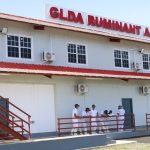– As vaccination of at-risk animal against endemic diseases program records success in 2015
The Animal Production Unit is pivotal to the overall development of the livestock industry of Guyana and has over the years, been instrumental in ensuring that proper animal husbandry is enforced.
This year, the Guyana Livestock Development Authority (GLDA) will continue to work towards the resuscitation of the industry. For the year 2015, a total of 1,136 animals were vaccinated for rabies. Infected animals can spread the virus by biting another animal or a person. In rare cases, rabies can be spread when infected saliva gets into an open wound or the mucous membranes, such as the mouth or eyes.
As it relates to Botulism and blackleg vaccinations, 2,047 animals were vaccinated; a 94.9% increase in animals vaccinated when compared to the total vaccinated in the previous period. There was also the implementation of the vampire bat reduction programme. This programme saw 16 clinics being conducted as focus is now being placed on bat trapping and treatment of bite wounds.
With the implementation of this initiative, there has been a 77.8% increase in the incidences of reported and recorded vampire bat bite wounds. With more persons coming forward and reporting cases, GLDA’s extension officers have been working tirelessly to ensure that it the situation remains under control.
The GLDA has also made significant improvements in the testing and eradication of Bovine Tuberculosis (BTB) and Brucellosis. In 2015, a total of 1,139 animals were tested for TB as part of a targeted surveillance activity which amounted to a 52.7% increase in animals tested. As it relates to Brucellosis, which is a highly contagious zoonosis caused by ingestion of unpasteurized milk or undercooked meat from infected animals or by coming in close contact with their secretions, 844 animals tested for the same period.
The GLDA also embarked on a number of disease identification and control training programmes with various farmers. During this exercise, a total of 415 farmers and extension officers were trained to accurately identify, treat and further control diseases that could affect the health and safety of the animals.
In 2015, 12,940 visits were conducted across the country, during which, the GLDA was able to collect and document a number of the activities carried out farms as it relates to animal husbandry. The authority is also actively involved in a number of disease surveillance exercises.
The most recent activity involved the authority conducting 708 visits on Highly Pathogenic Avian Influenza (HPAI) surveillance where they collected 599 samples for New Castle and HPAI in poultry. Additionally, 844 blood samples were also collected for Brucellosis.





